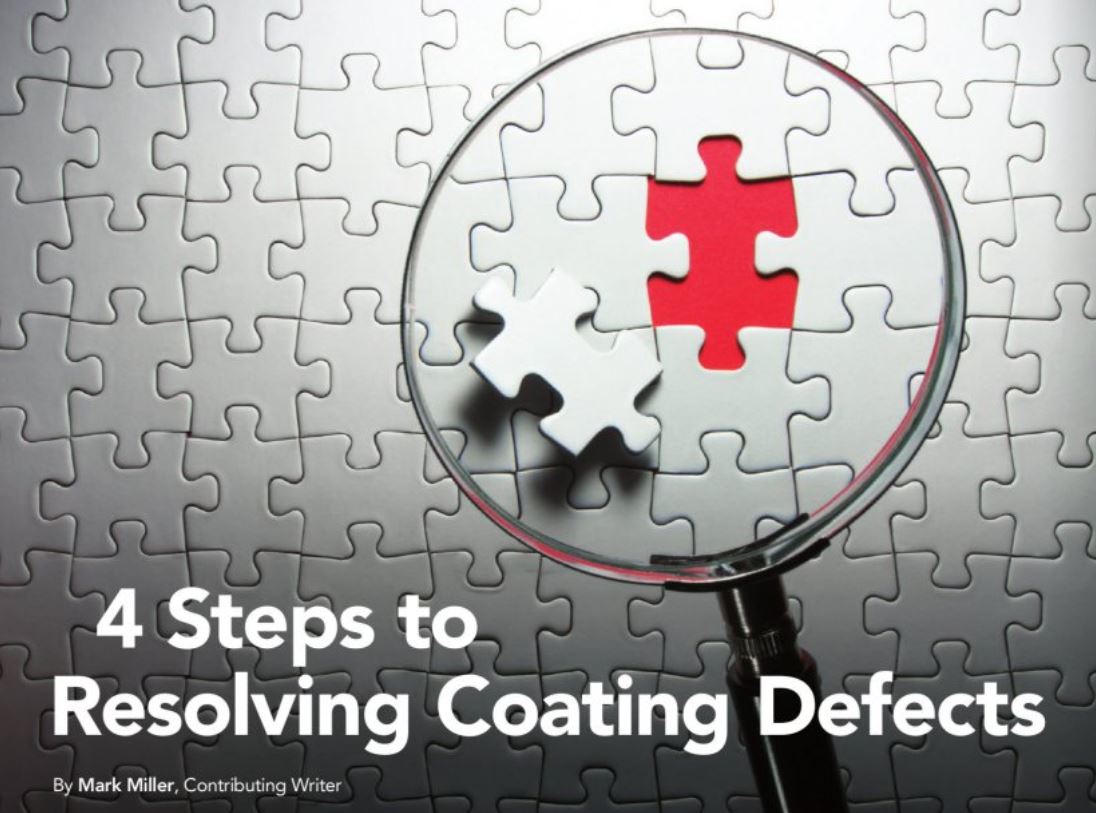4 Steps to Resolving Coating Defects
- Published: February 03, 2020

By Mark Miller, Contributing Writer
Every coating process engineer and equipment operator wants to know where to start when a coating problem surfaces with their product, so let’s start with the surface of the problem. The main thing to do is properly identify the coating defect you are seeing. This will allow you to concentrate on the process, equipment, or material issue and not spend time on unnecessary investigation. So, look at the coating defect and identify the issue. No, no… really LOOK at the coating defect. Analyze it. How? Besides looking at the defect off-line after it is produced with the naked eye, or under a microscope, you can look at the defect as it occurs on the web with on-line inspection equipment. Visualization and understanding the defect is an important first step in the troubleshooting process. The remaining four areas are based off of true understanding of what you are seeing.
A good example of this is when a coating streak occurred in a process I was involved with. Initially the thought was that the fluid had gels in it. Without looking at the coating defect under a microscope, the process engineer immediately tore down the pumps, hoses and filters and replaced them. Guess what? The defect remained. Upon closer examination (100X magnification), the streak was a film particle that was trapped between the fluid and the substrate. Once the substrate was properly cleaned, the defect went away. So, again, look at the defect.
The second step is to collect defect samples and non-defect comparative samples, process data from those runs, and product data from the raw materials. Time spent with this information will provide the road map to the defect solution. Make sure the information collected includes discussions with the keeper of the information, so you understand if there are discrepancies in what is provided and what is reality. This is where the defect solving team is formed. The stakeholders in the solution should include the keepers of the information.
The third step is to utilize the collected information to develop a designed experiment that will push the process and materials to define the defect. Work with the defect solving team (engineers, operators, and material control) to identify the top five materials and process conditions that are most likely to contribute to the defect in question. This will be the basis of the experimental design. Utilizing five variables will allow you to statistically analyze all the variables with the fewest number of design points without losing their interactions. In the design of experiment lingo, this means that you should run a 25-1 DOE.
Once the experimental design is established, run the trial test to see what shakes out as important to controlling the defect. The first trial may be one of three, but within three trials you can narrow the focus down to what is really behind the defect. The result can simply be qualified as “yes” or “no” that the defect is present but, having a graduated scale for the defect will help concentrate your efforts.
The last step in the process is to utilize the results so that the defect does not happen again. You may laugh at this, but if you have taken the time to deal with a defect that required as much thought, energy, and time as you have spent on the recent issue then don’t stop before the results are communicated. Making sure everyone in the product chain, form raw material supply to converted product delivery, is aware of the defect and the reasons behind the solution is critical. The only thing worse than a coating defect, is a coating defect that comes back after being cured. Happy troubleshooting!












